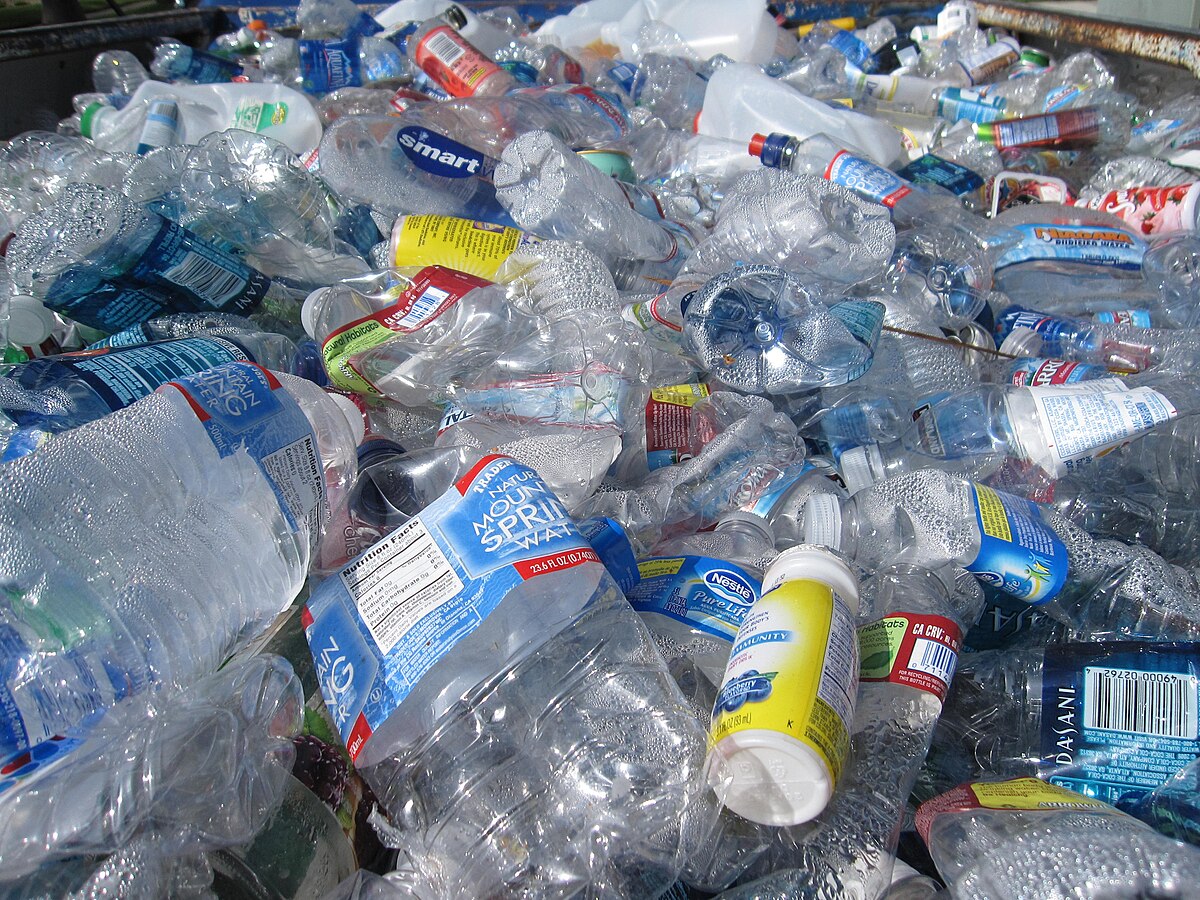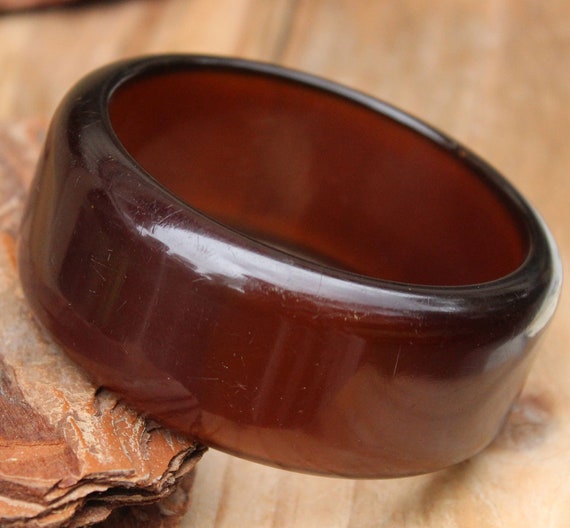Hello ladies and gents this is the viking telling you that today we are talking about

Plastic is material consisting of any of a wide range of synthetic or semi-synthetic organic compounds that are malleable and so can be molded into solid objects.
Plasticity is the general property of all materials which can deform irreversibly without breaking but, in the class of moldable polymers, this occurs to such a degree that their actual name derives from this specific ability.
Plastics are typically organic polymers of high molecular mass and often contain other substances. They are usually synthetic, most commonly derived from petrochemicals, however, an array of variants are made from renewable materials such as polylactic acid from corn or cellulosics from cotton linters.
Due to their low cost, ease of manufacture, versatility, and imperviousness to water, plastics are used in a multitude of products of different scale, including paper clips and spacecraft. They have prevailed over traditional materials, such as wood, stone, horn and bone, leather, metal, glass, and ceramic, in some products previously left to natural materials.
In developed economies, about a third of plastic is used in packaging and roughly the same in buildings in applications such as piping, plumbing or vinyl siding. Other uses include automobiles , furniture, and toys. In the developing world, the applications of plastic may differ—42% of India's consumption is used in packaging. Worldwide, about 50 kg of plastic is produced annually per person, with production doubling every ten years.
Plastics have many uses in the medical field as well, with the introduction of polymer implants and other medical devices derived at least partially from plastic. The field of plastic surgery is not named for use of plastic materials, but rather the meaning of the word plasticity, with regard to the reshaping of flesh.
 The world's first fully synthetic plastic was bakelite, invented in New York in 1907, by Leo Baekeland who coined the term 'plastics'. Many chemists have contributed to the materials science of plastics, including Nobel laureate Hermann Staudinger who has been called "the father of polymer chemistry" and Herman Mark, known as "the father of polymer physics".
The world's first fully synthetic plastic was bakelite, invented in New York in 1907, by Leo Baekeland who coined the term 'plastics'. Many chemists have contributed to the materials science of plastics, including Nobel laureate Hermann Staudinger who has been called "the father of polymer chemistry" and Herman Mark, known as "the father of polymer physics".
The success and dominance of plastics starting in the early 20th century led to environmental concerns regarding its slow decomposition rate after being discarded as trash due to its composition of large molecules. Toward the end of the century, one approach to this problem was met with wide efforts toward recycling
The development of plastics has evolved from the use of natural plastic materials (e.g., chewing gum, shellac) to the use of chemically modified, natural materials (e.g., natural rubber, nitrocellulose, collagen, galalite) and finally to completely synthetic molecules (e.g., bakelite, epoxy, polyvinyl chloride). Early plastics were bio-derived materials such as egg and blood proteins, which are organic polymers. In around 1600 BC, Mesoamericans used natural rubber for balls, bands, and figurines. Treated cattle horns were used as windows for lanterns in the Middle Ages. Materials that mimicked the properties of horns were developed by treating milk-proteins (casein) with lye.
In the nineteenth century, as industrial chemistry developed during the Industrial Revolution, many materials were reported. The development of plastics also accelerated with Charles Goodyear's discovery of vulcanization to thermoset materials derived from natural rubber.
Parkesine (nitrocellulose) is considered the first man-made plastic. The plastic material was patented by Alexander Parkes, in Birmingham, England in 1856. It was unveiled at the 1862 Great International Exhibition in London. Parkesine won a bronze medal at the 1862 World's fair in London. Parkesine was made from cellulose (the major component of plant cell walls) treated with nitric acid as a solvent. The output of the process (commonly known as cellulose nitrate or pyroxilin) could be dissolved in alcohol and hardened into a transparent and elastic material that could be molded when heated. By incorporating pigments into the product, it could be made to resemble ivory.
In 1897, the Hanover, Germany mass printing press owner Wilhelm Krische was commissioned to develop an alternative to blackboards. The resultant horn-like plastic made from the milk protein casein was developed in cooperation with the Austrian chemist (Friedrich) Adolph Spitteler (1846–1940). The final result was unsuitable for the original purpose. In 1893, French chemist Auguste Trillat discovered the means to insolubilize casein by immersion in formaldehyde, producing material marketed as galalith.
In the early 1900s, Bakelite, the first fully synthetic thermoset, was reported by Belgian chemist Leo Baekeland by using phenol and formaldehyde.
After World War I, improvements in chemical technology led to an explosion in new forms of plastics, with mass production beginning in the 1940s and 1950s (around World War II). Among the earliest examples in the wave of new polymers were polystyrene (PS), first produced by BASF in the 1930s, and polyvinyl chloride (PVC), first created in 1872 but commercially produced in the late 1920s. In 1923, Durite Plastics Inc. was the first manufacturer of phenol-furfural resins. In 1933, polyethylene was discovered by Imperial Chemical Industries (ICI) researchers Reginald Gibson and Eric Fawcett.
In 1954, polypropylene was discovered by Giulio Natta and began to be manufactured in 1957.
In 1954, expanded polystyrene (used for building insulation, packaging, and cups) was invented by Dow Chemical. The discovery of Polyethylene terephthalate (PET) is credited to employees of the Calico Printers' Association in the UK in 1941; it was licensed to DuPont for the US and ICI otherwise, and as one of the few plastics appropriate as a replacement for glass in many circumstances, resulting in widespread use for bottles in Europe.
In the last few years this product is killing us i hope you liked this post and as always have a chilled day from the Viking
PLASTIC

Plastic is material consisting of any of a wide range of synthetic or semi-synthetic organic compounds that are malleable and so can be molded into solid objects.
Plasticity is the general property of all materials which can deform irreversibly without breaking but, in the class of moldable polymers, this occurs to such a degree that their actual name derives from this specific ability.
Plastics are typically organic polymers of high molecular mass and often contain other substances. They are usually synthetic, most commonly derived from petrochemicals, however, an array of variants are made from renewable materials such as polylactic acid from corn or cellulosics from cotton linters.
Due to their low cost, ease of manufacture, versatility, and imperviousness to water, plastics are used in a multitude of products of different scale, including paper clips and spacecraft. They have prevailed over traditional materials, such as wood, stone, horn and bone, leather, metal, glass, and ceramic, in some products previously left to natural materials.
In developed economies, about a third of plastic is used in packaging and roughly the same in buildings in applications such as piping, plumbing or vinyl siding. Other uses include automobiles , furniture, and toys. In the developing world, the applications of plastic may differ—42% of India's consumption is used in packaging. Worldwide, about 50 kg of plastic is produced annually per person, with production doubling every ten years.
Plastics have many uses in the medical field as well, with the introduction of polymer implants and other medical devices derived at least partially from plastic. The field of plastic surgery is not named for use of plastic materials, but rather the meaning of the word plasticity, with regard to the reshaping of flesh.
 The world's first fully synthetic plastic was bakelite, invented in New York in 1907, by Leo Baekeland who coined the term 'plastics'. Many chemists have contributed to the materials science of plastics, including Nobel laureate Hermann Staudinger who has been called "the father of polymer chemistry" and Herman Mark, known as "the father of polymer physics".
The world's first fully synthetic plastic was bakelite, invented in New York in 1907, by Leo Baekeland who coined the term 'plastics'. Many chemists have contributed to the materials science of plastics, including Nobel laureate Hermann Staudinger who has been called "the father of polymer chemistry" and Herman Mark, known as "the father of polymer physics".The success and dominance of plastics starting in the early 20th century led to environmental concerns regarding its slow decomposition rate after being discarded as trash due to its composition of large molecules. Toward the end of the century, one approach to this problem was met with wide efforts toward recycling
The development of plastics has evolved from the use of natural plastic materials (e.g., chewing gum, shellac) to the use of chemically modified, natural materials (e.g., natural rubber, nitrocellulose, collagen, galalite) and finally to completely synthetic molecules (e.g., bakelite, epoxy, polyvinyl chloride). Early plastics were bio-derived materials such as egg and blood proteins, which are organic polymers. In around 1600 BC, Mesoamericans used natural rubber for balls, bands, and figurines. Treated cattle horns were used as windows for lanterns in the Middle Ages. Materials that mimicked the properties of horns were developed by treating milk-proteins (casein) with lye.
In the nineteenth century, as industrial chemistry developed during the Industrial Revolution, many materials were reported. The development of plastics also accelerated with Charles Goodyear's discovery of vulcanization to thermoset materials derived from natural rubber.
Parkesine (nitrocellulose) is considered the first man-made plastic. The plastic material was patented by Alexander Parkes, in Birmingham, England in 1856. It was unveiled at the 1862 Great International Exhibition in London. Parkesine won a bronze medal at the 1862 World's fair in London. Parkesine was made from cellulose (the major component of plant cell walls) treated with nitric acid as a solvent. The output of the process (commonly known as cellulose nitrate or pyroxilin) could be dissolved in alcohol and hardened into a transparent and elastic material that could be molded when heated. By incorporating pigments into the product, it could be made to resemble ivory.
In 1897, the Hanover, Germany mass printing press owner Wilhelm Krische was commissioned to develop an alternative to blackboards. The resultant horn-like plastic made from the milk protein casein was developed in cooperation with the Austrian chemist (Friedrich) Adolph Spitteler (1846–1940). The final result was unsuitable for the original purpose. In 1893, French chemist Auguste Trillat discovered the means to insolubilize casein by immersion in formaldehyde, producing material marketed as galalith.
In the early 1900s, Bakelite, the first fully synthetic thermoset, was reported by Belgian chemist Leo Baekeland by using phenol and formaldehyde.
After World War I, improvements in chemical technology led to an explosion in new forms of plastics, with mass production beginning in the 1940s and 1950s (around World War II). Among the earliest examples in the wave of new polymers were polystyrene (PS), first produced by BASF in the 1930s, and polyvinyl chloride (PVC), first created in 1872 but commercially produced in the late 1920s. In 1923, Durite Plastics Inc. was the first manufacturer of phenol-furfural resins. In 1933, polyethylene was discovered by Imperial Chemical Industries (ICI) researchers Reginald Gibson and Eric Fawcett.
In 1954, polypropylene was discovered by Giulio Natta and began to be manufactured in 1957.
In 1954, expanded polystyrene (used for building insulation, packaging, and cups) was invented by Dow Chemical. The discovery of Polyethylene terephthalate (PET) is credited to employees of the Calico Printers' Association in the UK in 1941; it was licensed to DuPont for the US and ICI otherwise, and as one of the few plastics appropriate as a replacement for glass in many circumstances, resulting in widespread use for bottles in Europe.
In the last few years this product is killing us i hope you liked this post and as always have a chilled day from the Viking

Comments
Post a Comment